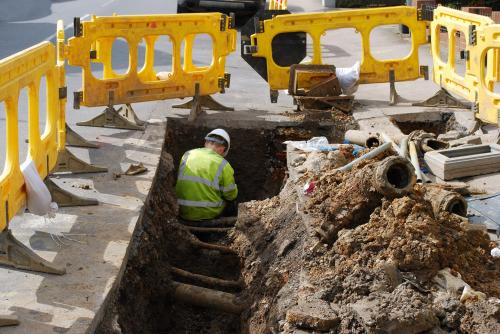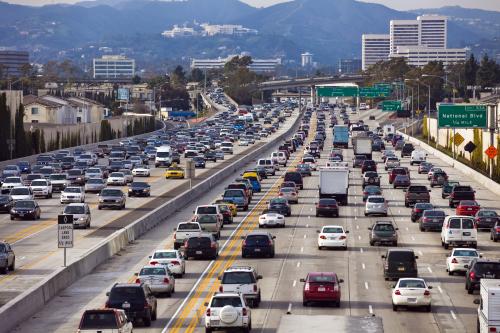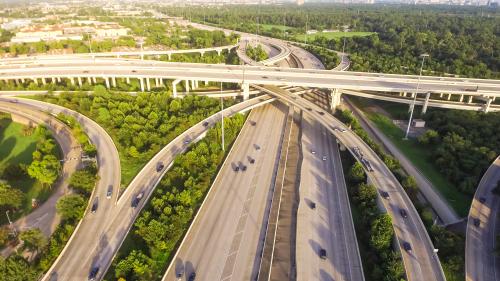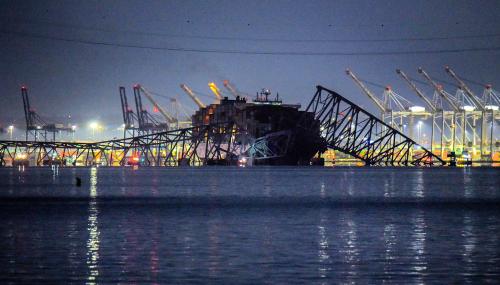This post was updated on February 22, 2021 to reflect the cost estimate of the Gateway Program.
Washington, D.C. is developing a tradition: With the start of a new administration comes grand promises of federal solutions to our nation’s infrastructure challenges. Yet from the Obama administration’s “shovel-ready” projects to the Trump administration’s trillion-dollar plan, tangible results have been vexingly scarce.
Starting in January 2017, I spent 15 months in the Trump White House working with hundreds of governors, mayors, county executives, and members of Congress—all of whom were eager to come up with sensible policies to improve our nation’s infrastructure. But the administration’s plan faltered due to several missteps. Now, as President Joe Biden takes his own shot at broad infrastructure reform, his team would do well to understand what went wrong for the previous White House.
We’ve all heard the repeated declarations that infrastructure is bipartisan and should be easy. And, to a certain extent, it is. Infrastructure benefits from a general lack of partisanship while touching every American every day—it is familiar. Regretfully, however, that familiarity can create difficulties about the best policies needed to improve infrastructure.
In a White House full of bankers and investors, the Trump administration’s initial infrastructure strategy seemed blazingly obvious: put together a list of the best projects, borrow money at Treasury rates, and directly fund projects based upon return on investment.
However, the drafters of this approach were unfamiliar with the nexus between U.S. infrastructure and the federal government, assuming that the government is an owner of that infrastructure. On the contrary, the Bureau of Economic Analysis estimates that the federal government owns only around 6% of the nation’s transportation and water infrastructure. Instead of being an owner, the federal government is a grant-maker (it supplies about 25% of infrastructure funding nationwide) and regulator (primarily environmental and safety rules). The Trump administration’s strategy started with the false premise that the federal government makes project selection and procurement decisions; it generally does not. Those decisions are made at the state and local levels.
Reassessing the federal government’s role resulted in White House policy recommendations vastly different than the initial strategy. And because the administration made a number of subsequent missteps, the plan received little attention from Congress, aside from one hearing featuring five Cabinet members before the Senate Committee on Commerce, Science, and Transportation.
The first misstep came when we took an approach—similar to that proposed by the Biden administration—to develop infrastructure from the bottom-up. A bipartisan group of mayors and governors volunteered to champion two core principles: using federal funds to incentivize increased infrastructure spending and dramatically streamlining the federal permitting process. This allowed the policy conversation to focus on the needs of leaders who actually decide what and how to build. However, this multifaceted coalition unraveled as President Trump sidetracked multiple infrastructure announcements by making unprompted controversial statements regarding race relations and immigration, alienating many local officials.
Another misstep was making the plan too technical. While a little over the top, House Transportation and Infrastructure Committee Chair Rep. Peter DeFazio (D-Ore.) was not wholly inaccurate in likening the plan to a “think tank” product. We gathered hundreds of ideas from state and local leaders, career staff in the participating Cabinet agencies, and Capitol Hill. We then boiled those ideas down to the several dozen included in the proposal, based upon their efficacy in improving the nation’s infrastructure. The result was a nuanced, but technical, policy document. However, we did not connect those changes to improvements in the daily lives of typical Americans, missing the opportunity to make infrastructure policy tangible.
There is no doubt that the media and the public want tangible policy. The Gateway Program highlights this point. Dubbed “the most important infrastructure project in the country,” the Gateway Program is a $30 billion, 10-mile rail project running between Newark, N.J. and Penn Station in New York City. The media fixated on this one project, which—while important—does not solve our national problem. In hindsight, we should have addressed this hunger for tangible outcomes by better explaining how our plan translated into specific benefits for households and communities—for example, by publicly presenting hard numbers as to how it could improve commute times, fill vexing potholes, and repair drinking water systems across the country. The challenge for the Biden administration will be to keep their infrastructure plan tangible, but not get lost in the minutiae of specific projects and fail to reform the federal role in infrastructure, which still largely dates back to the 1950s.
Generations have passed since our nation took a step back and thought hard about how the federal government can best partner with state and local governments to deliver world-class infrastructure—and it shows. Like the current administration, President Trump wanted an infrastructure plan quickly. But the only well-considered plan that can be produced quickly is one that relies heavily on the status quo, and there is strong agreement that we do not need more of the same.
Yet more of the same is what the Biden administration is likely to get if it simply talks about the plan’s price tag. Advocating for $1 trillion or $2 trillion in new spending without thoughtfully exploring how those investments will be used and the federal government’s role will likely lead to another infrastructure plan unable to garner the support needed to pass Congress. And the tradition of future presidential candidates wishfully promising trillion-dollar solutions to our nation’s infrastructure problems will continue.
The Biden administration has the right talent and the public support to create a meaningful and sensible solution to our nation’s infrastructure woes. Examining where previous efforts have stumbled is a good place to start. Such reflection will hopefully be part of a strategy that leads to better infrastructure and allows future administrations to focus their energies on other issues.







Commentary
How Biden can succeed on infrastructure where Trump did not
February 17, 2021